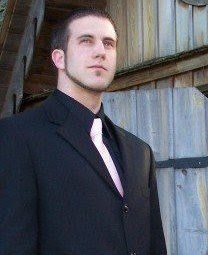In the Know #10
January 14, 2008
Word of the Day from Dictionary.com:
primogeniture \pry-moh-JEN-ih-choor\, noun:
1. The state of being the firstborn of the same parents; seniority by birth among children of the same family.
2. (Law) An exclusive right of inheritance that belongs to the eldest son.
Today in history, according to Wikipedia:
 1501 - Martin Luther, 17, enters the University of Erfurt.
1501 - Martin Luther, 17, enters the University of Erfurt.1973 - The Miami Dolphins (1966-1973 logo pictured) defeat the Washington Redskins to win Super Bowl VII and become the first NFL team to go undefeated in a season.
1994 - U.S. President Bill Clinton and Russian President Boris Yeltsin sign the Kremlin Accords.
2000 - The Dow Jones Industrial Average reaches a record high of 11,750.28 and closes at 11,722.98.
Today's Famous Births:
 83 B.C. - Marcus Antonius - Mark Antony - Roman politician
83 B.C. - Marcus Antonius - Mark Antony - Roman politician1741 - Benedict Arnold (pictured), American general notorious of treason
1875 - Albert Schweitzer, Alsatian (German/French) physician and theologian
1919 - Andy Rooney, American journalist
1932 - Don "Big Daddy" Garlits, American race car driver known as the father of drag racing
1948 - Carl Weathers, American actor, Apollo Creed from Rocky
1953 - "Hacksaw" Jim Duggan, American wrestler, HOOO!!!!
1963 - Steven Soderbergh, American director, Ocean's 11, 12 and 13
1964 - Shepherd Smith, American news anchor, The Fox Report and Studio B on FOX News
1968 - LL Cool J, American rapper and actor, "Mama Said Knock You Out"
1969 - Dave Grohl, American musician, Nirvana and Foo Fighters
1979 - John Reuben, American hip-hop artist, "What are you dippity doing?"
Trivia:
Today's category - Hubble Telescope
 ~ Hubble telescope (pictured) is named after American astronomer Edwin Hubble.
~ Hubble telescope (pictured) is named after American astronomer Edwin Hubble.~ Hubble telescope was launched April 24, 1990.
~ Hubble has taken pictures of the most distant galaxies ever photographed in the Hubble Ultra Deep Field.
~ Hubble has five scientific instruments on board: the Wide Field and Planetary Camera 2, the Space Telescope Imaging Spectrograph, the Corrective Optics Space Telescope Axial Replacement, the Advanced Camera for Surveys and the Space Telescope Imaging Spectrograph. The telescope's guidance system can also be used for astrometry.
~ The first images taken were blurry due to spherical aberration, a 1993 mission fixed the problem (pictured are photos from before and after the fix).
 ~ Three service missions have been sent to Hubble to fix issues and replace instruments.
~ Three service missions have been sent to Hubble to fix issues and replace instruments.~ A fourth service mission is set for September 2008 to replace some of the current instruments.
I always wondered...
...how solar cells work...
 Solar cells (pictured) use the photovoltaic effect to produce electricity. Light absorbing materials - such as silicon, cadmium telluride and other more rare compounds - are utilized to capture photons which knock electrons from the molecules. The electrons flowing through the material create electricity, which is captured and fed to an inverter to change the DC power to AC so that the power is usable in home applications.
Solar cells (pictured) use the photovoltaic effect to produce electricity. Light absorbing materials - such as silicon, cadmium telluride and other more rare compounds - are utilized to capture photons which knock electrons from the molecules. The electrons flowing through the material create electricity, which is captured and fed to an inverter to change the DC power to AC so that the power is usable in home applications.The total solar energy available to the earth is approximately 3850 zettajoules (3.850*10^24 joules) per year. Worldwide energy consumption in 2004 for the entire world was 0.471 zettajoules (4.71*10^20 joules). In other words, solar energy could potentially produce over 8,000 times the world's energy needs (3.850*10^24/4.71*10^20=8.17*10^3). Note: Wind can theoretically supply 6 zettajoules of energy per year (almost 13 times the world's consumption).
[All references from Wikipedia.org unless otherwise noted]


No comments:
Post a Comment